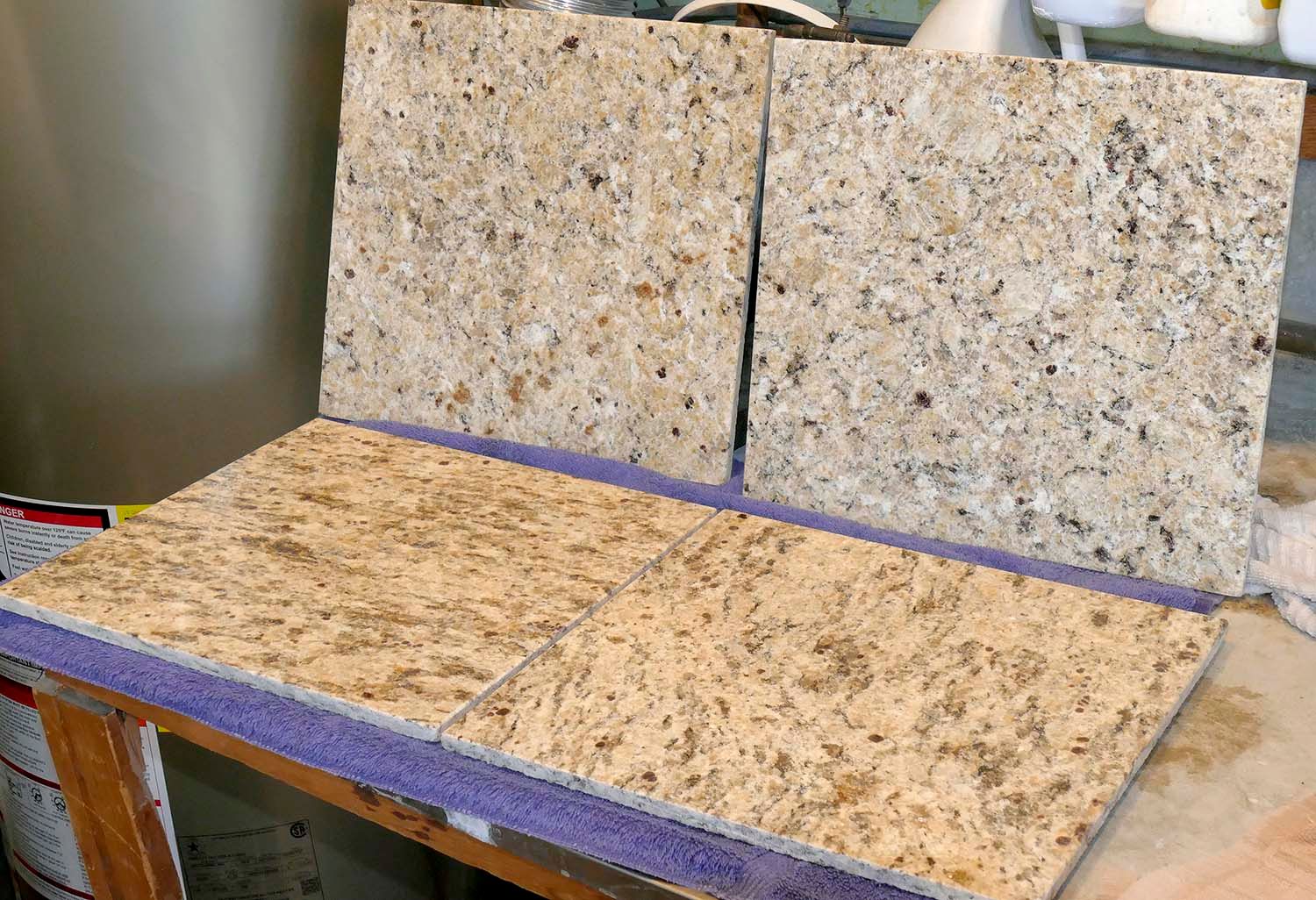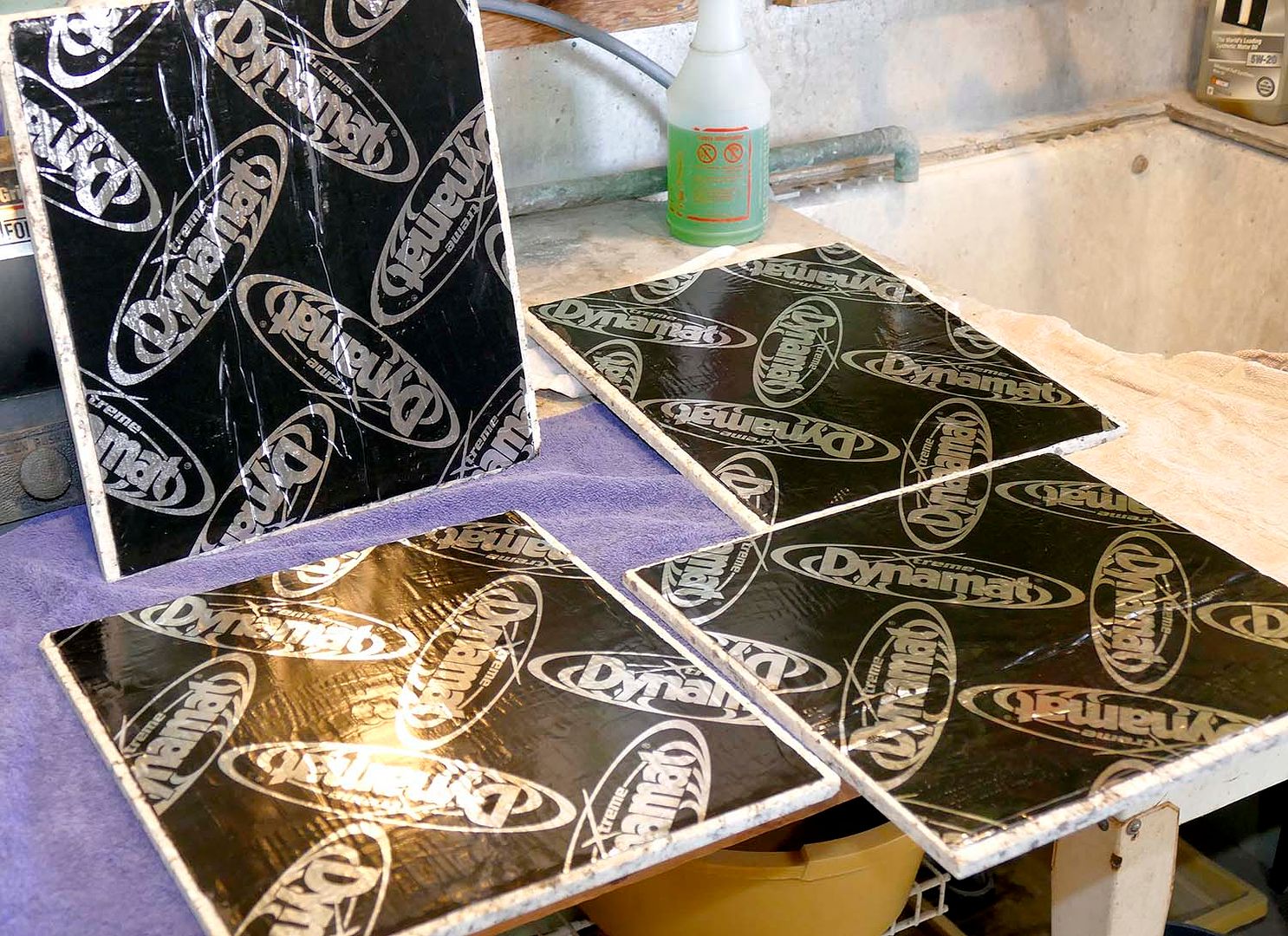 |
Audio Asylum Thread Printer Get a view of an entire thread on one page |
For Sale Ads |
 |
Audio Asylum Thread Printer Get a view of an entire thread on one page |
For Sale Ads |
70.162.169.147
I'm rebuilding the x-overs of a pair of Serenity Super-7 speakers. See
http://www.audioasylum.com/forums/MUG/messages/21/219948.html
The plate that the original x-over is built upon is probably 3/8" fiberboard; it was screwed to the top of the H-box in which live the two open-baffle woofers. I'd like to isolate the x-over components from the vibrations of the bassbox by building a very-hi-mass plate upon which I'll mount the components and which I'll suspend in some manner from the bassbox...perhaps with Herbies Baby Booties.
http://herbiesaudiolab.net/bbootie.htm
After I spread the components a bit, the plate will be 11" wide and 13" deep. I priced half-inch-thick glass plates at about $110 EACH and 1/4" brass plates for about $125 each. After recovering from that sticker shock, I priced 3/8"-thick glass plates locally for TWO for $51. That caused me to overthink a composite plate of 3 sheets each of glass and SoundCoat the Thicker...
http://www.soniccraft.com/product_info.php/soundcoat-gp-p-4620
...starting with SC on the bottom and glass on the top. It'd be a bit over an inch think and ought to weigh a substantial amount and be quite dead acoustically. I'd hotglue the components to the glass top and place the plates/crossovers atop the Herbies Baby Booties atop the bassboxes.
What you think? Overbuilt? Over paranoid? Who the hell could hear the difference between the original (free) 3/8" board and this monstrosity? Great idea--I wish I'd thought of it?
One thing--pls do not suggest I mount the x-overs outboard. I've done that once...
...and it made the speaker system VERY difficult to move.
----------
Tin-eared audiofool, large-scale-Classical music lover, and damned-amateur fotografer.
William Bruce Cameron: "...not everything that can be counted counts, and not everything that counts can be counted."
Follow Ups:
Had the tiles cut to 12X11". FWIW, the four tiles cost $35, the cutting $20, the Dynamat Extreme Door Kit #10435 $52, and the urethane-based adhesive $17...making a total of $124 for the two x-over platforms. My wife calls me Mr. Excess for good reason. :-)

All 4 of these are the same color, that being white/gray-with brown. The pair lying down is reflecting more light from the ceiling bulbs while the 2 standing are reflecting more daylight. Each of the bare tiles weighs an average of 2195 grams = 4.84 pounds.I then applied one layer of Dynamat Extreme ('DE'; the thicker of the 2 sizes) to the bottoms of all four.

Each of those now weighs 2371 grams = 5.23 pounds or 176 grams or 0.39 pounds more. I then identified the top two tiles of the four and added another layer of DM to each of the bottoms of the bottom pair of tiles. Those now weigh an average of 2577 grams or 5.68 pounds, adding another 0.45 pounds per tile.The addition of each layer of DM decreased whatever 'boinginess' each tile had, turning the noise into a lower-level, broader-frequency thump. I'll soon be gluing the tiles together, into pairs composed of, from the bottom, two layers of DM, a tile, one layer of DM, and the top tile. As I wrote earlier, I'll suspend each with three Herbie's Audio Lab small, energy-absorbing, quishly footers called...ahem...Baby Booties. Probably I'll use three per x-over assembly.
----------
Tin-eared audiofool, large-scale-Classical music lover, and damned-amateur fotografer.
William Bruce Cameron: "...not everything that can be counted counts, and not everything that counts can be counted."
Edits: 02/18/16
...rather dead. Each is about 10mm thick, and after being trimmed to 12X11", each PAIR of tiles will weigh almost 10 pounds. I decided to use Dynamat Extreme, the thicker version of the automotive-panel-damping material to damp the tiles further. I'll roll a layer or two onto the bottom of each tile and see how they 'sound' and then glue them together with the same kind of 3M spray-on cement I used with my recent amppad project. I expect that each two-layer plate including Dynamat will weigh at least 11 pounds and ought to be REALLY dead.
Haven't yet decided how to adhere the components to the granite...maybe hotglue, maybe urethane-based windshield adhesive (below).
----------
Tin-eared audiofool, large-scale-Classical music lover, and damned-amateur fotografer.
William Bruce Cameron: "...not everything that can be counted counts, and not everything that counts can be counted."
My favorite combo so far as my experience goes is common yellow poplar 3/4",EAR C-1002 as thick as you can afford and some form of brass footers. Ask Herbie about the yellow poplar found commonly in hardware stores. Out of all the woods I've tried YP and Sitka spruce are the best. Sitka spruce is very hard to impossible to find except the thin very expensive musical stuff. Both I and Herbie like rope caulk for damping components ... Tweaker
I would not use glass even with the dampening layer. I would carefully orient inductors to not interact. Probably mount components on a tone wood like spruce or maple. Isolate the board and case in a faraday cage or solid metal enclosure.

The type of material the crossover is mounted on does indeed make a difference sonically. Likewise how the crossover components are mounted to the board is also important. Personally I think it is a mistake to get too hung up on theories about why the material and mounting are important. In other words, instead of speculating what material is better based on some theory of "damping" vibrations, just try different materials and see which you prefer. In my experience, I preferred the sound of a thinner material such as 3/8 inch plywood compared to MDF or thick Baltic Birch plywood. I tried an aluminum/plywood composite but the aluminum made the sound too bright for my tastes.
As for the mounting of components, again experimentation is in order. I found each of my larger components such as heavy air core coils and Duelund CAST capacitors benefited from being elevated off the plywood by short spacers. I tried various materials including cones but preferred the effect of 3 small three-quarter inch cubes cut from plywood.
The audible benefits of removing the crossover from the inside of the cabinet to an external enclosure are minimal. If you still plan on going with an external enclosure, material such as 5/8" or 3/4" Baltic birch (or as another poster suggested MDF) should be more than adequate.
The universe is made of electrons, protons, neutrons, and morons.
...from audio nervosa, AKA audiofoolia. That's how one gets one's system from OK-sounding to great-sounding in many-dozens of tiny steps. This is just one of them. :-)
And if I didn't want to improve the overall sound, I'd be leaving the crossover parts as-is. UPWARD, Dick--ever upward!
My latest idea is to use HIGH-density fiberboard, AKA hardboard, brand name of Masonite. It's high mass AND inexpensive. Maybe three layers of that and two layers of SoundCoat the Thicker...or four and three, respectively. We'll see.
----------
Tin-eared audiofool, large-scale-Classical music lover, and damned-amateur fotografer.
William Bruce Cameron: "...not everything that can be counted counts, and not everything that counts can be counted."
Keep in mind that hard materials are easily excited by vibration. Where as "softer" less dense materials are less likely to vibrate.
.
Freak out...Far out...In out....
.
----------
Tin-eared audiofool, large-scale-Classical music lover, and damned-amateur fotografer.
William Bruce Cameron: "...not everything that can be counted counts, and not everything that counts can be counted."
... is that we can get too hung up on minute details that can have no audible effect. Hell, why not add 100 layers of sound absorbent material, encase it in concrete and cover it with gold, then bury it 100 ft. below ground to prevent vibration? C'mon let's get real!
The universe is made of electrons, protons, neutrons, and morons.
But if you don't believe in tweaky stuff like this, why do you hang around this forum?
And what does "...apparently lost audphile..." mean?
----------
Tin-eared audiofool, large-scale-Classical music lover, and damned-amateur fotografer.
William Bruce Cameron: "...not everything that can be counted counts, and not everything that counts can be counted."
But opinion isn't necessarily fact. Believing a tweak WILL work is not the same as a tweak ACTUALLY working. The only reasonable way to check is a double blind test, but since many in the audiophile community pooh-pooh the idea, I know that wouldn't be a necessarily be a reasonable suggestion.
The universe is made of electrons, protons, neutrons, and morons.
There really is no foolproof way to check anything (even using a double-blind test), and that's why we run around like headless chickens making changes we can only hope will affect the sound and then tending to believe in the changes we do make, because we've then spent time and money on them. But we're not bad people, darnit.
I think glass is a bad idea for vibration control. It is heavy but quite resonant. In your scenario I would probably use 1/2" aluminum plate (cheap) with the SC. Check out onlinemetals.com for the aluminum.
I built my x-overs on 1/2" UHMW polyethylene and mounted them to the outside rear of the cabinets with EAR isolation grommets available from Mcmaster.com.
.
Freak out...Far out...In out....
Also consider good ol' MDF. 3/4" or 1" thick. Fairly heavy and probably less resonant than any metal or glass.
.
Freak out...Far out...In out....
Post a Followup:
| FAQ |
Post a Message! |
Forgot Password? |
|
||||||||||||||
|
||||||||||||||
This post is made possible by the generous support of people like you and our sponsors: